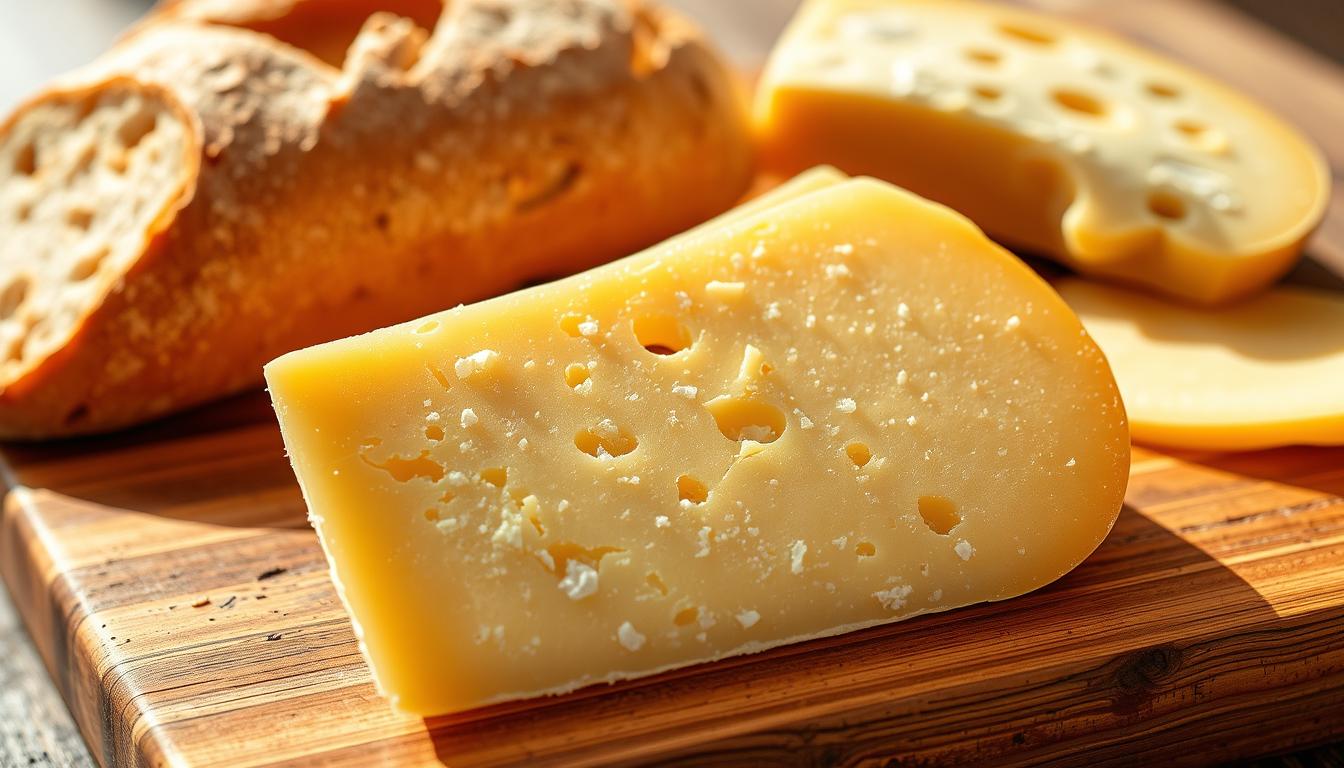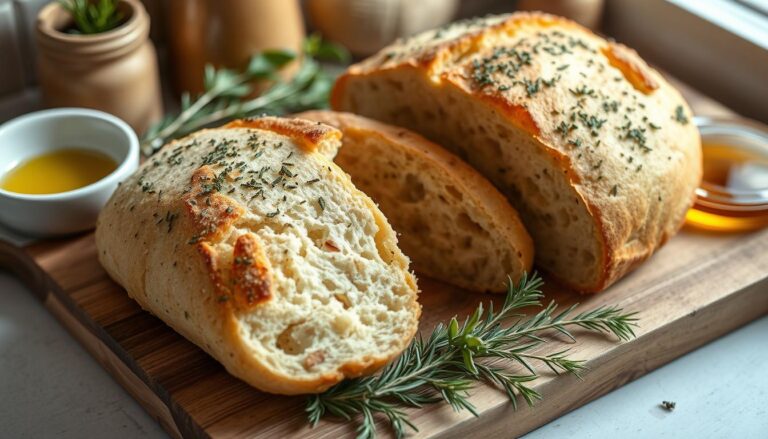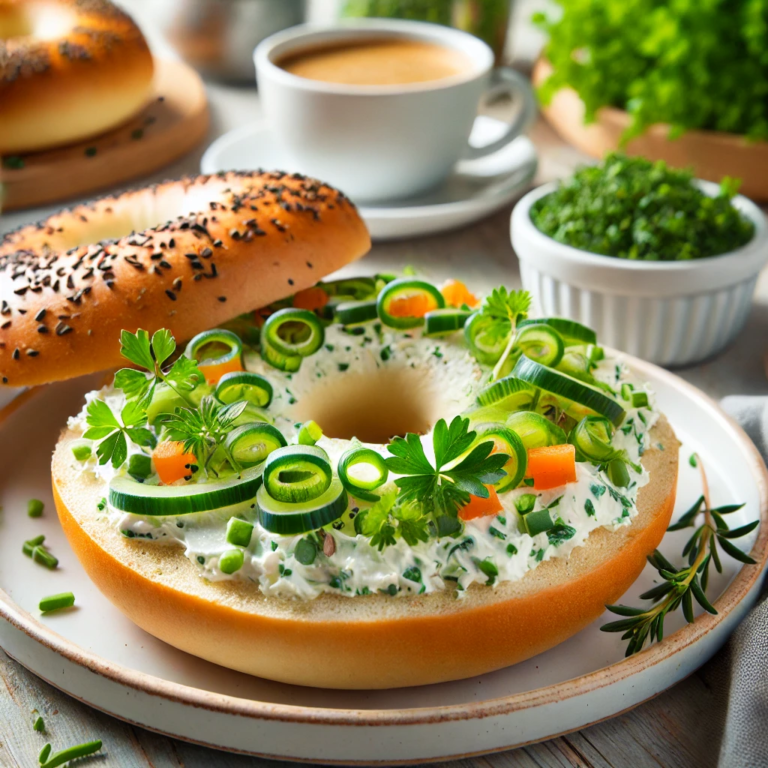Discover the Delicious Taste of Grana Padano Cheese
Grana Padano is a top-notch cheese made from cow’s milk in Italy’s Po Valley. It’s famous for its deep, nutty taste and long history1. For almost 1,000 years, it’s been a key part of Italian food, starting with Benedictine monks who made it from extra milk1.
This cheese is loved across Italy, made in five regions and 13 provinces1.
Grana Padano is a great choice for those looking for a Parmesan substitute. Its bold taste adds depth to any meal2. Its unique taste and rich history make it a favorite among cheese enthusiasts. The European Union has even recognized it as a protected cheese, giving it PDO status1.
Key Takeaways
- Grana Padano is a premium cheese with a rich, nutty flavor and centuries-old tradition1.
- It is produced in the Po Valley of northern Italy, across five Italian regions and 13 provinces1.
- Grana Padano can be substituted in recipes traditionally calling for Parmesan cheese2.
- It has a distinctive characteristic of progressing from white to straw yellow as it ages1.
- Grana Padano is a great addition to any dish, with its rich flavor and versatility2.
What is Grana Padano Cheese?
Grana Padano cheese is a type of Italian cheese with a history of nearly 1,000 years. It started with Benedictine monks using excess milk3. Today, it’s a key part of Italian food.
The making of Grana Padano follows a traditional method passed down through generations. These skilled cheese-makers, called casari, play a crucial role4.
This cheese is made from cow’s milk and has a grainy texture and nutty taste. It’s often used in place of Parmesan, adding flavor to many dishes5. It’s versatile, making it a favorite in Italian kitchens.
Italian cheese making is an art form, and Grana Padano is a perfect example. Its rich history and traditional methods make it a symbol of Italian culture4. To learn more, visit Grana Padano and explore Italian cheese making.
The Distinctive Characteristics of Grana Padano
Grana Padano is a famous Italian cheese known for its unique taste and texture. It has a nutty, slightly sweet flavor and a granular texture. This makes it great for grating over pasta, salads, and soups, making it a favorite among chefs and food lovers6.
The cheese is made from unpasteurized cow’s milk from the Po River Valley in northern Italy. It’s aged for at least 9 months6. This aging process enhances its flavor and texture. Plus, it has the Protected Designation of Origin (PDO) status, ensuring its quality and authenticity6.
Grana Padano is versatile in cooking, pairing well with many dishes. Its nutty, slightly sweet taste goes well with various ingredients. It’s a hard cheese with a pale yellow color and a firm, crumbly texture, perfect for grating or slicing6.
For those interested in Italian cheese, Grana Padano is a great choice. It has a rich history, unique characteristics, and is versatile in cooking. It’s a favorite among cheese lovers6. To learn more, visit Grana Padano cheese connoisseur or cheese vibes for more on Italian cheese types.
Nutritional Profile of Grana Padano
Grana Padano is a cheese packed with nutrients. It’s full of vitamins and minerals. It has a lot of protein, calcium, and other important minerals.
According to data7, it has about 33 grams of protein per 100 grams. This makes it a great source of protein. It also has a lot of calcium, about 1165 mg per 100 grams, which is good for bones7.
The Grana Padano nutrition facts show it has a lot of fat, around 29 grams per 100 grams. This includes different types of fats. But, it has very little lactose because of the ageing process. This makes it good for people with lactose intolerance8.
It’s also rich in vitamins like A, B1, B2, and B12. Plus, it has minerals like potassium, magnesium, and zinc9.
Grana Padano’s calcium to phosphorus ratio is about 1.77. This ratio helps keep bones and teeth healthy. It’s almost lactose-free, with less than 10 mg of galactose per 100 grams9.
Overall, Grana Padano is a nutritious and healthy choice for a balanced diet.
Grana Padano vs Parmigiano Reggiano
Italian cheese lovers often debate Grana Padano and Parmigiano Reggiano. Both have rich histories and unique tastes. Grana Padano ages for at least 9 months10, while Parmigiano Reggiano ages for 12 months10. This aging time affects their distinct qualities.
Grana Padano comes from partially skimmed cow’s milk, making it less fatty than Parmigiano Reggiano. Parmigiano Reggiano, on the other hand, is made from a mix of skimmed and whole milk11. Grana Padano is produced in several regions, while Parmigiano Reggiano comes from specific areas11. Parmigiano Reggiano tastes nuttier and stronger, while Grana Padano is butterier and softer11.
Grana Padano melts well, making it great for cooking. Parmigiano Reggiano is often grated over dishes11. Grana Padano uses lysozyme for preservation, unlike Parmigiano Reggiano11. With over 5 million wheels made yearly, Grana Padano leads as the world’s best-selling PDO cheese10. Your choice between Grana Padano and Parmesan depends on your taste and recipe needs.
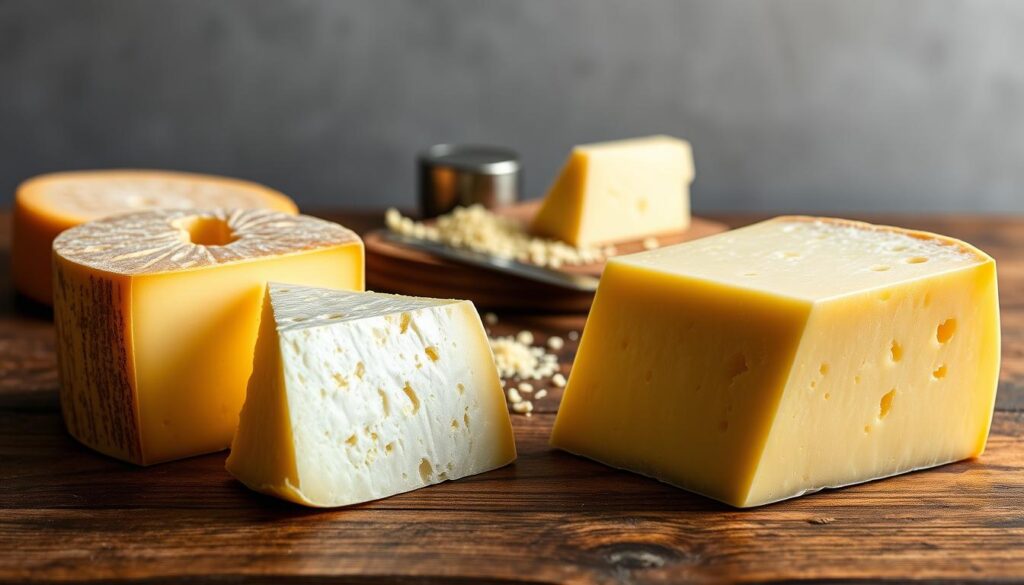
When deciding between Grana Padano and Parmigiano Reggiano, think about these points:
- Flavor profile: Grana Padano is milder and sweeter, while Parmigiano Reggiano is nuttier and complex
- Aging time: Grana Padano ages for at least 9 months, and Parmigiano Reggiano for 12 months
- Production region: Grana Padano is made in multiple regions, and Parmigiano Reggiano in a specific area
Knowing these differences helps you pick the right cheese. Whether you’re comparing Grana Padano and Parmesan or exploring Italian cheese, this knowledge is key.
Understanding Grana Padano’s Aging Process
Grana Padano’s taste changes as it ages, making the cheese aging process key to its making. When it’s young, at 9 to 16 months, it tastes fragrant, mild, and delicate, like milk and cream12. As it gets older, its flavor deepens, with hints of butter, hay, and dried fruit12.
The Grana Padano aging process has different stages, each with its own traits. Young Grana Padano, aged 9 to 16 months, is light and soft, with a pale yellow color12. On the other hand, aged Grana Padano, over 20 months, has a grainy texture and richer taste13.
Aging greatly affects the flavor, making it lactose-free after 9 months because of the lack of lactase enzyme14. This makes Grana Padano great for those with lactose intolerance. Its unique texture comes from crystalline spots of tyrosine, which form during aging14.
Best Ways to Serve Grana Padano
Grana Padano is a versatile cheese that can be served in many ways. You can enjoy it as a snack, with pasta, in salads, or as part of an antipasto platter. When serving Grana Padano, pair it with fruits, nuts, and cured meats to enhance its flavor. For a quick snack, try it with fresh fruit or crackers15.
Grana Padano is also great in various dishes like pasta, salads, and risottos. Its nutty, slightly sweet flavor pairs well with many ingredients. This makes it a great choice for cheese serving ideas. When cooking with Grana Padano, remember it can be grated, sliced, or crumbled16.
Some popular ways to serve Grana Padano include:
- Grated over pasta dishes, such as spaghetti or risotto
- Sliced and served with fresh fruit or nuts
- Crumpled and added to salads or soups
These are just a few examples of the many ways to serve Grana Padano. With its rich, nutty flavor and versatile texture, the possibilities are endless17.
Cooking with Grana Padano
Cooking with Grana Padano opens up a world of flavors. You can make everything from classic Italian dishes to new recipes. It’s a hard cheese that’s perfect for many dishes. You can grate it, slice it, or melt it, depending on your recipe.
Grana Padano is great in pasta dishes, risottos, and polentas. Try it in Cacio e Pepe with black pepper and pasta for a taste of Italy. It’s also good in salads, soups, and sauces. Plus, it pairs well with wines like Franciacorta, Lambrusco, and Soave18.
Here are some tips for cooking with Grana Padano:
- Use high-quality Grana Padano for the best flavor.
- Experiment with different types of dishes, such as pasta, risottos, and polentas.
- Pair Grana Padano with various wines to enhance the flavor of the dish.
Grana Padano is also a great Parmesan substitute. Try it in Jalapeno Popper Spread, Parmesan Risotto, and Garlic Parmesan Wings19. It’s made in Italy’s Po River Valley, in Emilia-Romagna. This area is protected under P.D.O. (Protected Designation of Origin) status20. Grana Padano adds a rich flavor to any dish.
| Recipe | Ingredients | Prep Time |
|---|---|---|
| Cacio e Pepe | Grana Padano, black pepper, pasta | 15 minutes |
| Grana Padano Risotto | Grana Padano, Arborio rice, white wine | 30 minutes |
Proper Storage Methods
Storing Grana Padano needs careful thought to keep it fresh and quality. It should be kept in the fridge, away from other foods to avoid flavor mix-up21. The best spot is the veggie crisper of your fridge21.
For storing, use a resealable bag or wrap it in plastic or foil to stop drying21. Always check for spoilage signs like bad smells, texture changes, or mold21. Hard cheeses like Grana Padano can last weeks, but soft cheeses don’t last as long21.
Here are some cheese storage tips:
- Store Grana Padano in the refrigerator at a consistent temperature21.
- Keep the cheese away from strong-smelling foods to prevent flavor absorption21.
- Check the cheese regularly for signs of spoilage21.
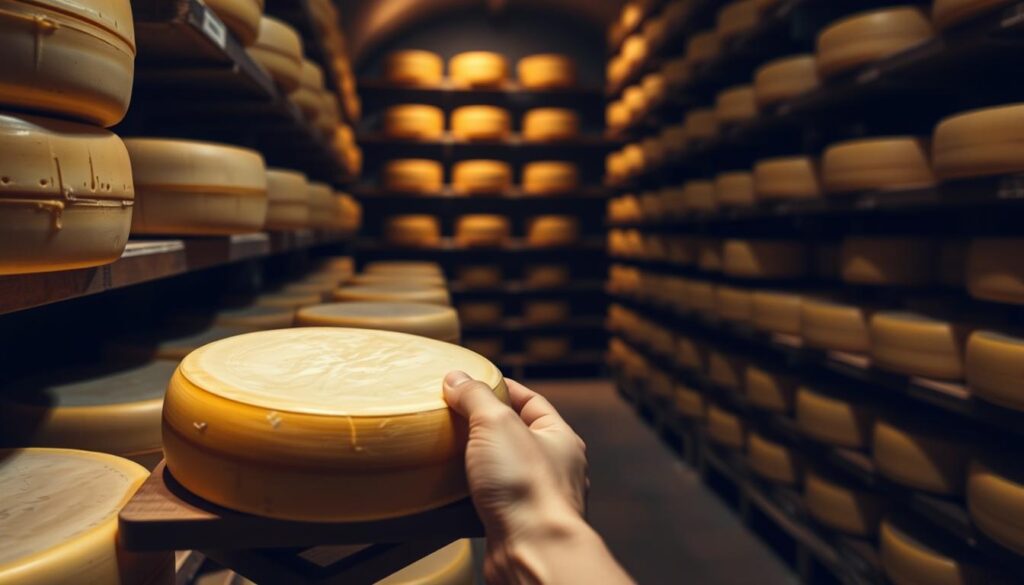
By following these tips, you can enjoy your Grana Padano longer while keeping its taste and quality21.
Health Benefits and Dietary Considerations
Grana Padano is not just tasty, but also good for you. It’s packed with protein, calcium, and other nutrients. This makes it a fantastic choice for a balanced diet. Its long aging process also makes it almost lactose-free, which is great for those with lactose intolerance22.
Adding Grana Padano to your meals can help in many ways. It’s known to lower the risk of osteoporosis and heart disease. The calcium in cheese is good for bones, and eating cheese can also lower blood pressure23. Plus, Grana Padano has enzymes that fight tooth decay bacteria24.
Here are some of the key nutritional benefits of Grana Padano:
- High in protein and calcium
- Low in lactose
- Rich in essential nutrients
Adding Grana Padano to your diet can boost your health and taste. Its health perks and delicious flavor make it a favorite among cheese fans22. It’s perfect for those looking to prevent osteoporosis or just want to spice up their meals23.
Purchasing Guide: How to Select Quality Grana Padano
When buying Grana Padano, picking a high-quality one is key. The quality can change based on where it’s made, how long it’s aged, and if it has the right marks. Look for the fire brand, the official symbol of Grana Padano PDO25. This mark is only on the best wheels, promising a great taste and texture.
The price of Grana Padano can vary a lot. A younger cheese is usually cheaper than an older one26. But, don’t just look at the price. The type of milk and how long it’s aged also affect its quality27.
Here are some things to think about when buying Grana Padano:
- Authentication marks: Check for the Grana Padano PDO mark to make sure it’s real25.
- Price: Find a balance between quality and cost, thinking about the cheese’s age and making process26.
- Where to buy: Buy from trusted places, like specialty cheese shops or online27.
By keeping these points in mind and choosing a top-notch Grana Padano, you’ll get to enjoy its rich, nutty flavor and smooth texture. This iconic Italian cheese is a treat.
Common Substitutes for Grana Padano
Grana Padano is a versatile Italian cheese, but you can find substitutes if it’s not available. Cheese substitutes like Parmigiano Reggiano, Pecorino Romano, and Asiago DOP can replace Grana Padano. Each has its own flavor and texture, perfect for different recipes28. If you’re using aged Asiago instead, use only two-thirds the amount of Grana Padano28.
Some Grana Padano substitutes taste similar, while others are stronger. For instance, Romano cheese is sharper and more pungent than Asiago and Parmesan. It’s the least similar in flavor to Grana Padano28. Nutritional yeast is a vegetarian option that can be used as a cheese substitute. It’s great for sprinkling on dishes but doesn’t melt29.
Here are some key points to consider when using Grana Padano substitutes:
- Parmigiano Reggiano can be used as a substitute, but it has a nuttier flavor28.
- Asiago DOP can be used as a substitute, but it has a milder flavor28.
- Romano cheese can be used as a substitute, but it should be used at half the amount compared to Grana Padano for a similar flavor28.
When picking a cheese substitute, think about the flavor and texture you need. With many options, you can easily find the right substitute for Grana Padano29.
Conclusion: Why Grana Padano Deserves a Place in Your Kitchen
Grana Padano is a cheese that can make many dishes better. It has a rich, nutty taste and a grainy texture. This cheese from Northern Italy is a must-have in your kitchen.
It’s great on pasta, in sauces, or as a snack. Grana Padano’s unique taste makes it a favorite among food lovers.
Grana Padano is also good for you. It’s lactose-free, which is great for those with lactose intolerance30. It’s full of protein, calcium, and other minerals. This makes it a healthy choice for your meals.
It’s also very versatile in cooking and baking. Grana Padano can make your dishes stand out. Try it in pasta, flatbreads, or other recipes31. Whether you like the strong taste of aged Grana Padano or the milder taste of younger versions, it’s a great addition to your kitchen.
Discover the magic of Grana Padano and take your cooking to the next level today!
FAQ
What is Grana Padano Cheese?
Grana Padano is a hard, Italian cheese made in the Po River Valley for nearly 1,000 years. It was first made by Benedictine monks to use up milk. It’s known for its nutty, slightly sweet flavor and granular texture.
What is the difference between Grana Padano and Parmigiano Reggiano?
Grana Padano and Parmigiano Reggiano are both hard, Italian cheeses. But they differ in texture and flavor. Grana Padano is softer and more delicate than Parmigiano Reggiano. It also tastes slightly sweeter and is aged for less time.
How does the aging process affect Grana Padano cheese?
Aging changes Grana Padano’s flavor and texture a lot. Young Grana Padano (aged 9-16 months) tastes more delicate and sweet. It’s softer too. Older Grana Padano (over 20 months) gets nuttier and firmer.
What are the best ways to serve Grana Padano cheese?
Grana Padano is great on its own or in dishes. It goes well with fruits, nuts, and cured meats. It also enhances pasta dishes, salads, and more.
Is Grana Padano cheese lactose-free?
Grana Padano is low in lactose because of aging. This makes it good for those with lactose intolerance. But, always check the label or ask a doctor about lactose content.
How do I properly store Grana Padano cheese?
To keep Grana Padano quality, store it right. Keep it refrigerated at a steady temperature. Use wax paper or vacuum-sealed bags to prevent drying. Check for mold or discoloration and throw it away if spoiled.
What are some common substitutes for Grana Padano cheese?
If Grana Padano is hard to find, try Parmigiano Reggiano, Pecorino Romano, or Asiago. These cheeses have similar flavors and can replace Grana Padano in recipes.

